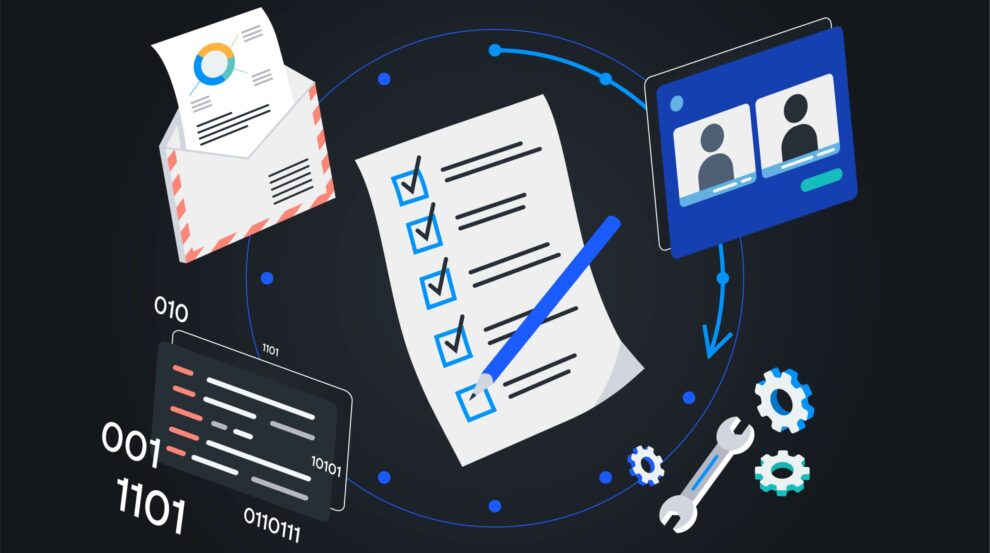In the realm of software development, the efficiency and collaboration of a development team can significantly impact the overall project outcome. One of the most tangible ways to measure these attributes is through the analysis of pull requests. They are a cornerstone of modern collaborative coding practices and offer a wealth of data that can be mined for insights into team productivity and collaboration levels. This article delves into how pull request analytics can be leveraged to gauge developer productivity and foster a more collaborative environment.
The Role of Pull Requests in Software Development
In the sphere of software development, pull requests serve as a pivotal method within version control systems, signalling to team members when changes have been made to a repository. This mechanism is instrumental in streamlining code reviews, bolstering team collaboration, and safeguarding code quality. Through the utilization of a pull request, developers can engage in discussions, scrutinize, and refine code collectively, enhancing knowledge sharing and fostering an environment ripe for collaborative problem-solving. Moreover, the practice of mandating peer reviews before the integration of changes plays a crucial role in upholding high standards of code quality.
This preemptive approach ensures that potential issues are identified and addressed early in the development process, thereby mitigating the risk of future complications. Pull requests also act as a living documentation of the development process, offering insights into the reasoning behind code changes and decisions. This archival feature aids new team members in getting up to speed and understanding the project’s history more thoroughly. Additionally, by providing a platform for constructive feedback, pull requests help developers grow their skills and expertise in a supportive environment. The integration of automated testing and checks within the pull request workflow further enhances code reliability and accelerates the review process, allowing teams to deliver high-quality software more efficiently.
Measuring Productivity
Measuring productivity through pull request analytics involves a comprehensive evaluation of various metrics, including the volume and frequency of pull requests. By closely monitoring how many pull requests are opened, merged, or rejected over specific periods, insights can be gleaned into the team’s coding activities and how work is distributed among members. Another critical metric is the time to merge, which measures the interval from when a pull request is created to when it is merged. This duration can shed light on the efficiency of the review process and the overall responsiveness of the team. Additionally, analyzing the size and complexity of pull requests is vital for identifying development process bottlenecks. Overly complex code changes, for instance, might necessitate longer review and testing times, thereby slowing down the development cycle. Through these analytics, teams can gain valuable insights into their productivity and identify areas for improvement.
Enhancing Collaboration
Enhancing collaboration within software development teams through pull request analytics involves deep diving into the data generated during the pull request process. By analyzing metrics such as reviewer engagement, the quality, and timeliness of feedback in pull request comments, and the integration of pull request activities with continuous integration and deployment (CI/CD) pipelines, teams can uncover invaluable insights into their collaborative practices. Reviewer engagement analytics can highlight how evenly review tasks are distributed and the depth of the reviews, pointing to opportunities to balance workload and enhance code quality.
Meanwhile, examining the nature and promptness of feedback in the comments can reveal the effectiveness of communication and support among team members, encouraging a more supportive and efficient development process. Furthermore, connecting pull request data with CI/CD outcomes can offer a broader perspective on how collaborative efforts impact the stability and speed of software releases, ultimately fostering a culture of accountability and continuous improvement within teams.
Leveraging Pull Request Analytics for Team Improvement
By strategically analyzing pull request data, teams can pinpoint common coding errors and address them through targeted training or the refinement of coding standards, leading to an overall improvement. How?
- Improving Code Quality: By strategically analyzing pull request data, teams can identify and address common coding mistakes through targeted training or improved coding standards.
- Streamlining the Development Process: Identifying bottlenecks in the pull request process can lead to more efficient workflows, reducing the time from code submission to deployment.
- Fostering a Culture of Collaboration: Highlighting and rewarding active participation in code reviews can encourage a more collaborative and inclusive team environment.
The strategic use of pull request analytics can transform how software development teams operate. From enhancing code quality to fostering a collaborative culture, the insights derived from pull request data offer a roadmap to a more efficient, effective, and harmonious development process. As the digital landscape continues to evolve, harnessing the power of these analytics will be key to staying competitive and achieving success in the software development industry.
Conclusion
Pull request analytics offer a powerful lens through which software development teams can measure and enhance their productivity and collaboration. By carefully analyzing metrics such as the volume, frequency, and quality of pull requests, teams can identify areas for improvement, streamline their development processes, and foster a culture of quality and teamwork. As the digital landscape evolves, the importance of leveraging data from pull requests will only grow, making it essential for teams to embrace these insights to stay competitive and deliver high-quality software solutions.










